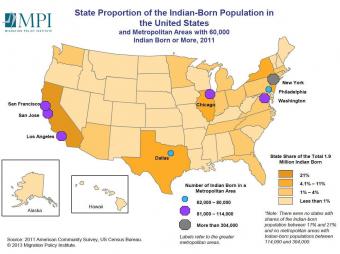U.S. Immigrant Population Spotlights
U.S. Immigrant Population Spotlights
Recent Activity
Articles
September 21, 2023
Los cubanos constituyen el mayor grupo de inmigrantes caribeños en Estados Unidos. La población está creciendo, ya que en los últimos años se ha producido la mayor oleada de emigración de la historia moderna de Cuba. Este artículo ofrece estadísticas clave sobre los 1.3 millones de inmigrantes cubanos en Estados Unidos.







